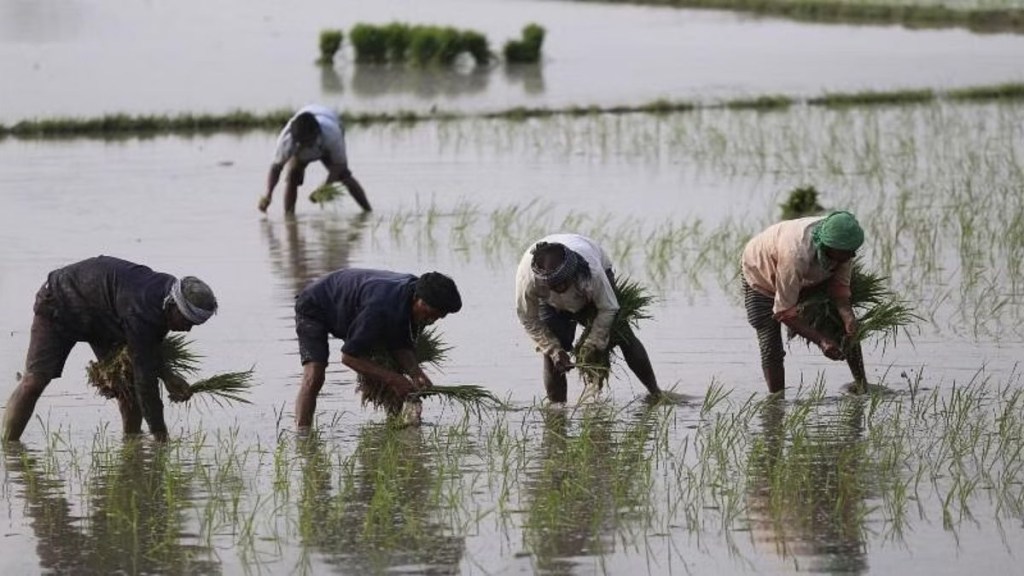The worth and the woolliness of the word ‘sustainability’ depends a great deal on who one is talking to and whose perspective is being sought. In the field of agriculture, there are corporates and consultants that glisten it endearingly with a rare sense of purposefulness that precedes any pursuit for profits. Politicians paste it as a label on policy proposals to promote their popular and planet-friendly appeal, NGOs and activists read it as mere grandstanding garbing greenwashing and to farmers it conjures up images of a struggle that has less to do with the end-of-the-planet concerns and more to do with worries about their household finances at the end of the month.
According to Dr Sukhpal Singh, professor and former chairperson, Centre for Management in Agriculture at the Indian Institute of Management (IIM), Ahmedabad, who has tracked the sector for several years now, it all boils down to four dimensions – the economic – wherein whoever is involved in any productive activity gets reasonable and sustainable returns; the environmental – wherein the resources are to be tapped judiciously with adequate attention to their regeneration; – the social – with concerns more around equity in distribution of gains across all stakeholders and finally, the technological – with its underlying relevance and the manner in which it is to be leveraged. Central to the approach on sustainability in agriculture, says Professor Singh, is the question of diversity between regions and among stakeholders within India. For instance, he sees “a lot of talk about natural and organic farming apart from carbon-credit markets with different voices on the subject. Some states like Himachal Pradesh for instance, seeking to opt out of natural farming while a state like Andhra Pradesh swearing by it alone. Or Kerala now willing to look beyond organic farming and keen to embrace new applications like gene editing in plant breeding.”
A question that emanates then is on the route that India needs to take to feed itself and the extent to which it can ride on traditional methods of farming and when to seek sustainability in the context of modern technology. Linked to it is the question of what farming method works best for a state. “Some dry states like Telangana, Karnataka, Tamil Nadu and Maharashtra look to dry land crops like millets and natural farming given the challenges of achieving largescale irrigation,” he says.
From a policy perspective, the question that therefore bedevils Indian agriculture hinges on what the professor calls the need for signals or clarity on the extent to which India can move towards non-chemical-based agriculture. An element of urgency on addressing this, stems from the fact that while many proponents of sustainable agriculture seek a chemical-free approach, subsidies continue to get channelised towards chemical-based farming.
Underlying these concerns are also questions around how are the yield gaps to be bridged across several regions in a range of crops such as pulses, oilseeds and some cereals with yield gaps ranging between 20 per cent to as much as 80 per cent.
To Professor Singh answers are also to be found on the way forward with genetically modified crops and the extent to which it is to be accepted given that different stakeholders continue to maintain a differing stance on this.
Inescapable in any discussion on sustainability in agriculture is also the question of role of regulation in promoting sustainability. It is crucial, says Professor Singh, pointing to the aspect of spurious inputs (pesticides, fertilisers or seeds) being sold in the market with some estimates, he sees worryingly pointing to as much as 25 per cent of the total sales being spurious. He says, “part of the problem is that some of the new laws are not yet in place and some of the old and crucial ones are outdated. For example, we are still basing much of the policies on the Acts that date back to 1970s and 1980s. For example, the Fertiliser Control Order of 1985 or the Insecticides Act of 1968. Many have been waiting for the past few years for a new Pesticides Management Bill and almost for the last two decades for a Seeds bill.”
So, when the aim is to deliver sustainability in agriculture, it is but natural to expect a regulatory architecture that is able to keep pace with the technology, the current needs and the new imperatives. At a more fundamental level of raising farmer incomes, there are still unanswered questions on what is the best way forward. For example, the professor asks, “can farmer incomes be doubled or tripled only by cutting down the cost of production with reliance solely on natural farming or should it be facilitated by a push for farming of produce that has more market value?” This then raises the question on what is being done to create outlets for such produce or the extent to which measures need to be taken to ensure people are able to afford organic produce, which could be at times be as much as 50-100 per cent costlier than the conventional produce.
Dr Singh feels India can feed itself with sustainable agriculture provided the measures unfold in a gradual manner with steps that enhance nutrient-availability in the soil and are around promotion of crop diversity. For example, pulses have nitrogen-fixing ability and can do the double job of not just providing high-value crops but also providing nitrogen to the soil. This can be enabled with crop-rotation, mixed farming and inter-cropping as forms of sustainable agriculture from the traditional methods of farming. In the whole discussion on sustainable agriculture, the professor reminds a question that cannot be lost sight of and stems from how food security is defined. To him, it is not just about food availability but also involves food affordability. Much then, depends on how the basket of crops that are covered are expanded with emphasis on crops that are more suited to local production and consumption.
